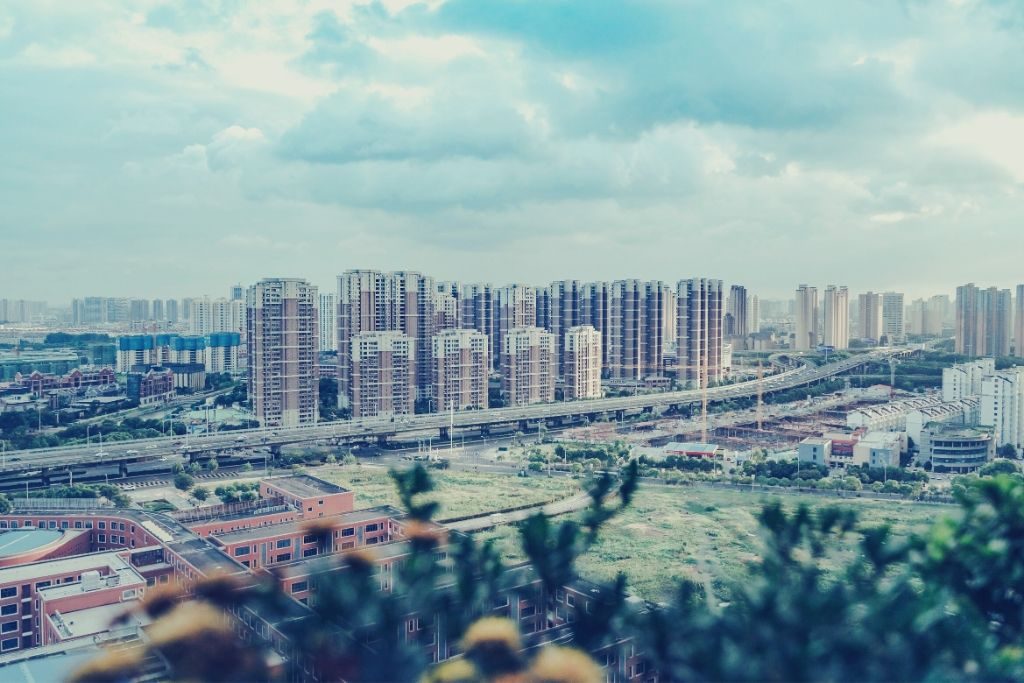Cities gave birth to civilization as we know it, according to many historians and archeologists. Since the first cities in Mesopotamia came to be thousands of years ago, the growth of global urbanization has been unstoppable. By 2050, more than two-thirds of the world’s population will reside in cities, a jump from today’s 55 percent.
However, the cities that contributed so much to humanity are now facing an unprecedented crisis. From the droughts of Cape Town to the slowly submerging Jakarta, climate change is already making harsh impacts on cities.
As the urban population around the world is skyrocketing, cities also have the lion’s share of responsibility with climate change — and solutions are emerging.
The concept of a “sponge city” is among the novel ways urban researchers and innovators are responding to the climate crisis that might impact billions of city dwellers.
What Is a “Sponge City”?

A great risk that climate change introduces to urban centers is flooding due to unpredictable and extreme weather patterns. Hence, sponge cities are urban ecosystems that are designed to take advantage of the floods, rather than letting them destroy livelihoods. These cities tap into biophilic urban design elements like green roofs, open green spaces, and interconnected waterways that can naturally detain and filter water.
Prof. Kongjian Yu, a Chinese ecological urbanist known as the “Sponge Cities Architect”, believes that as long as floods are controlled, they’re not the enemy.
“What we have done was completely wrong,” he says, referring to how the modern cities tend to use concrete waterways to channelize the floods into lakes or seas.
“What we should do is just revive ancient wisdom,” adds Prof. Kongjian Yu.
What Are the Benefits?

Through sponge cities, Prof. Kongjian Yu recommends that urban designers must work with nature, rather than against it. Hence, while there’s no single formula to create one, sponge cities are complex green networks that aim to use 70 percent of the floodwater.
The absorption and reuse of the floodwater not only help cities to avoid the grim consequences of urban flooding but also bear many other benefits. Sponge cities create more clean water for the residents, as the green infrastructure filters the water naturally.
These systems also minimize the burden on the city drainage and water networks, while reducing the risk of future floods. In the meanwhile, greener urban areas keep improving the quality of life.
A sponge city follows the philosophy of innovation: that a city can solve water problems instead of creating them. In the long run, sponge cities will reduce carbon emissions and help fight climate change.
Qiu Baoxing, president of Chinese Society for Urban Studies and of Urban Planning Society of China
Qiu Baoxing, a former vice-minister of housing and urban-rural development in China, said to The Guardian.
In the future, sponge cities reduce the risks that will stem from rising sea levels, too.
Sponge Cities, Resilient Futures
641 of 654 big Chinese cities experience urban flooding. In 2012, a devastating flood in Beijing was a wake-up call. The East Asian powerhouse is now a pioneer in establishing sponge cities in its urban centers. There are currently 16 pilot sponge cities — with plans to extend the number to 30 by 2030.
As China is hardly the only country in the world with vulnerability to urban flooding, sponge cities are appearing in other places too. The United States and India are among the countries that are investing in sponge cities as an urban climate change solution.
This green infrastructure innovation that is spreading around the world is making cities more resilient by re-aligning them with nature’s own rhythm.
“Floods are not enemies,” adds Prof. Kongjian Yu. “We can make friends with floods. We can make friends with water.”







